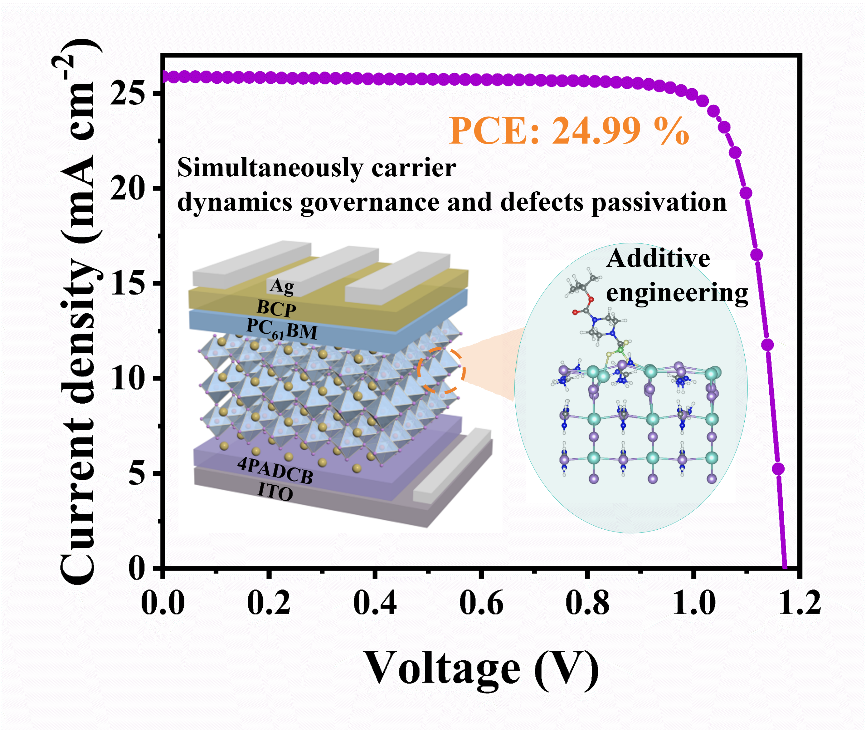Prof. GE Ziyi’s team at the Ningbo Institute of Materials Technology and Engineering (NIMTE)of Chinese Academy of Sciences (CAS), developed a novel multifunctional additive to passivate defects and promote carrier transport, thus boost efficiency and stability of inverted perovskite solar cell (PSCs). The study was published in Angewandte Chemie International Edition.
PSCs have garnered extensive attention in the field of new-generation photovoltaic technologies, owing to their extraordinary optoelectronic properties, low fabrication cost, and prospect of large-area device preparation. However, the commercialization and practical applications of PSCs have still been limited by the relatively low PCE and poor long-term stability, which can be attributed to the open-circuit voltage (VOC) loss in devices and crystallographic defects in perovskite films.
To address this problem, researchers at NIMTE employed potassium (4-tert-butoxycarbonylpiperazin-1-yl) methyl trifluoroborate (PTFBK) as an additive in the perovskite precursor solution. The introduction of PTFBK could effectively passivate the defects and improve the extraction of carriers in perovskite films.
Besides, the effective combination of multiple passivation effects enhanced the crystallization ability of perovskite, thus yielding high-quality perovskite films with larger grain size.
Thanks to the synergistic effect of PTFBK, highly efficient rigid and flexible p-i-n PSCs with high PCEs of 24.99% and 23.48% were obtained, respectively.
Moreover, benefiting from the hydrogen bonding between formamidinium and fluorine, the unencapsulated PTFBK-modified device exhibited excellent thermal, humidity and light stability under diverse conditions, like continuous 85 °C heating in N2-filled containers, ambient conditions at 60–70% relative humidity (RH), and 100 mW cm-2 continuous illumination.
The developed flexible PSCs can maintain 85% of its initial PCE after 5000 bending cycles at a radius of 5 mm, thus showing remarkable bending stability.
This study paves the way for the future development and commercialization of PSCs and relevant perovskite photovoltaic technologies.
This work was supported by the National Science Fund for Distinguished Young Scholars (No. 21925506), National Natural Science Foundation of China (Nos. U21A20331, 81903743, 22209192 and 62275251) and China Postdoctoral Science Foundation (No. 2022M713242).

Fig. The highly efficient and stable inverted PSCs via additive engineering (Image by NIMTE)
Contact
GE Ziyi
Ningbo Institute of Materials Technology and Engineering
E-mail: geziyi@nimte.ac.cn

